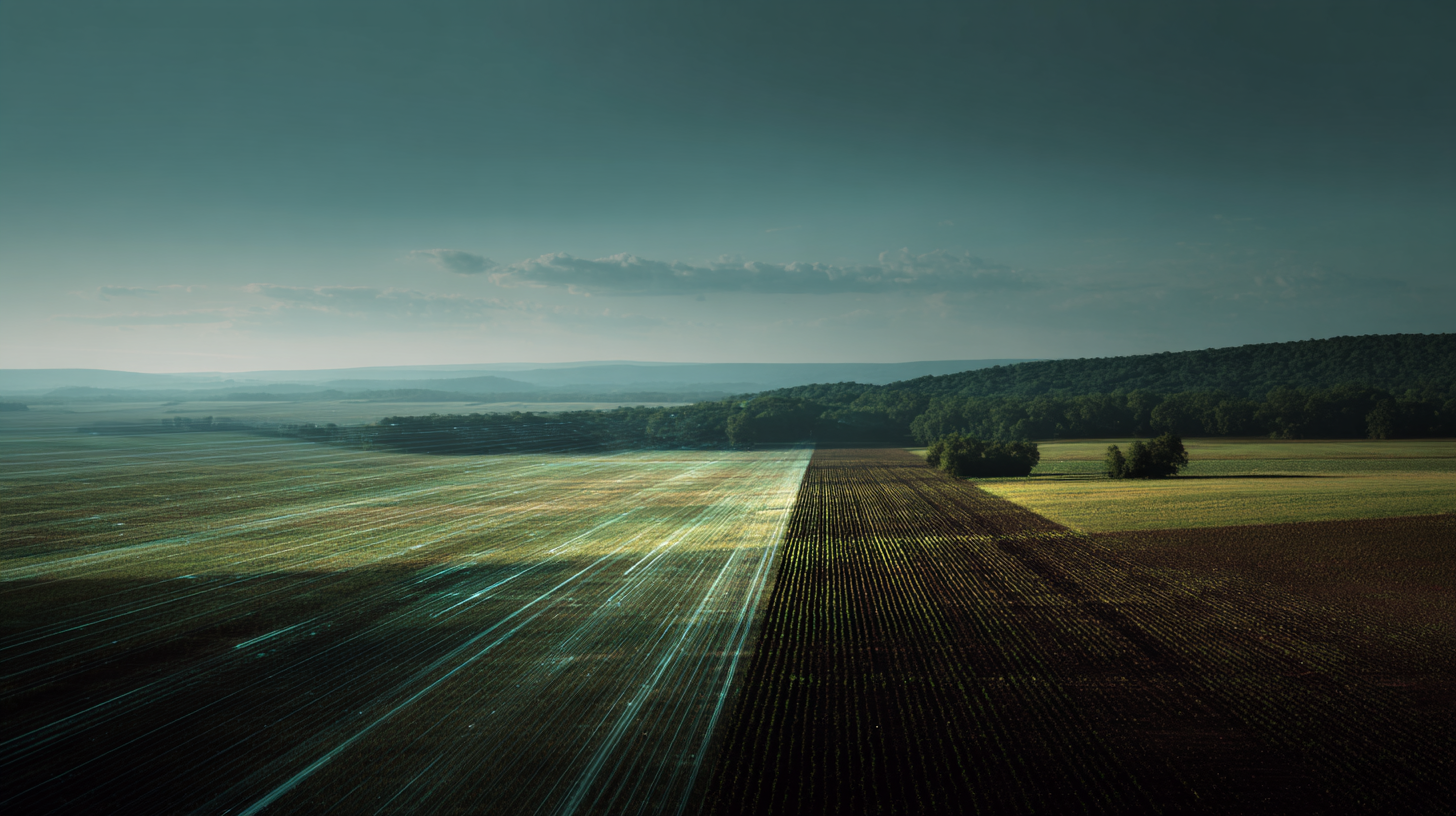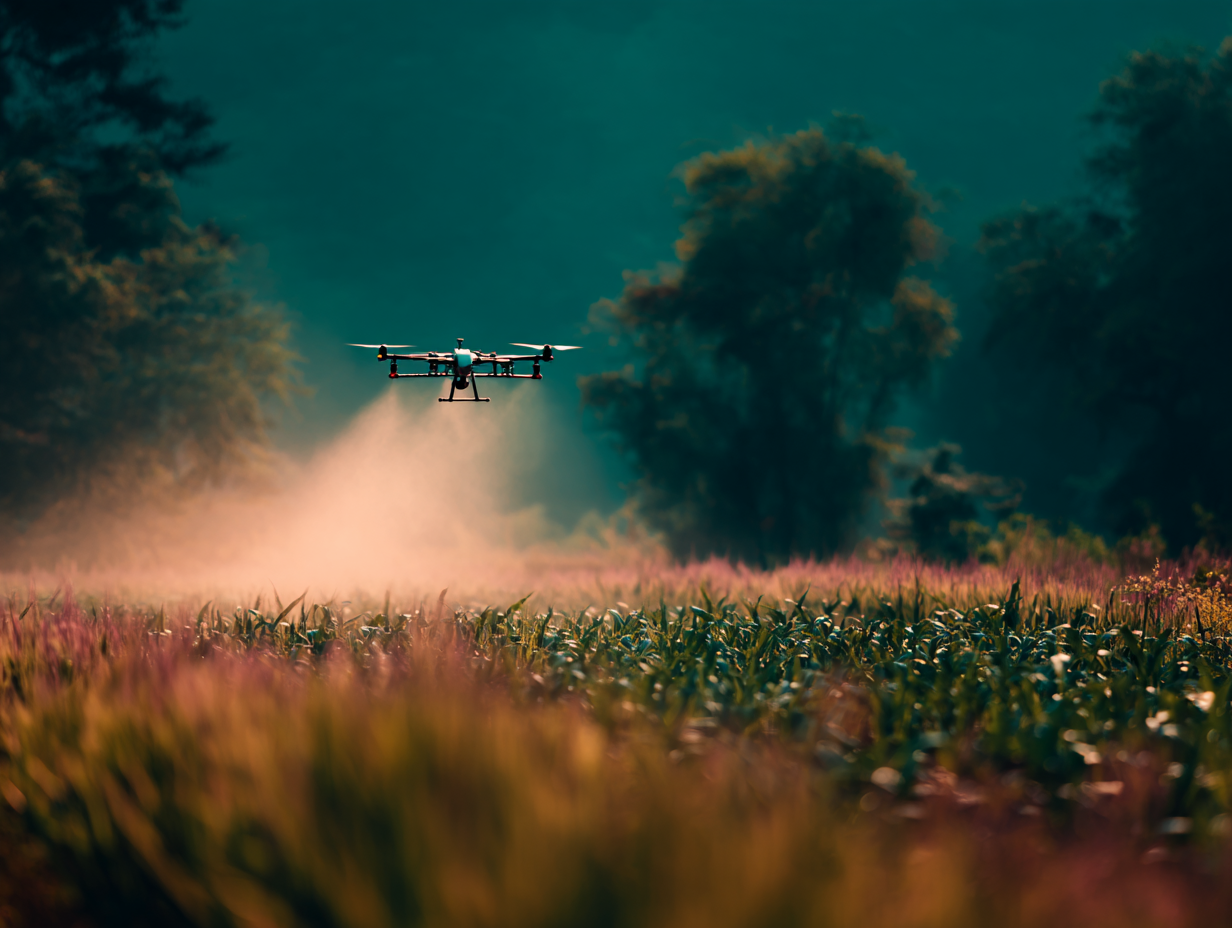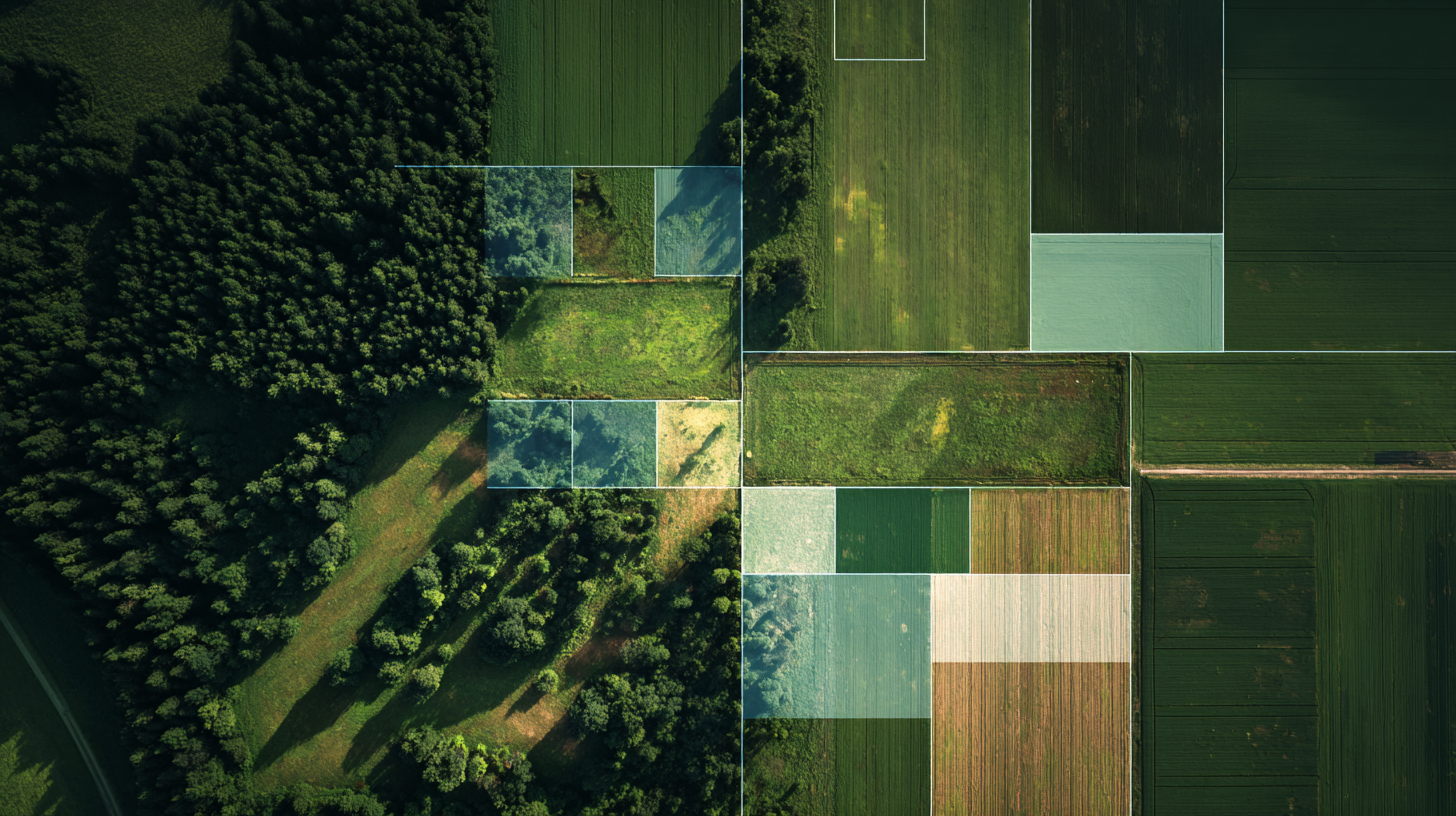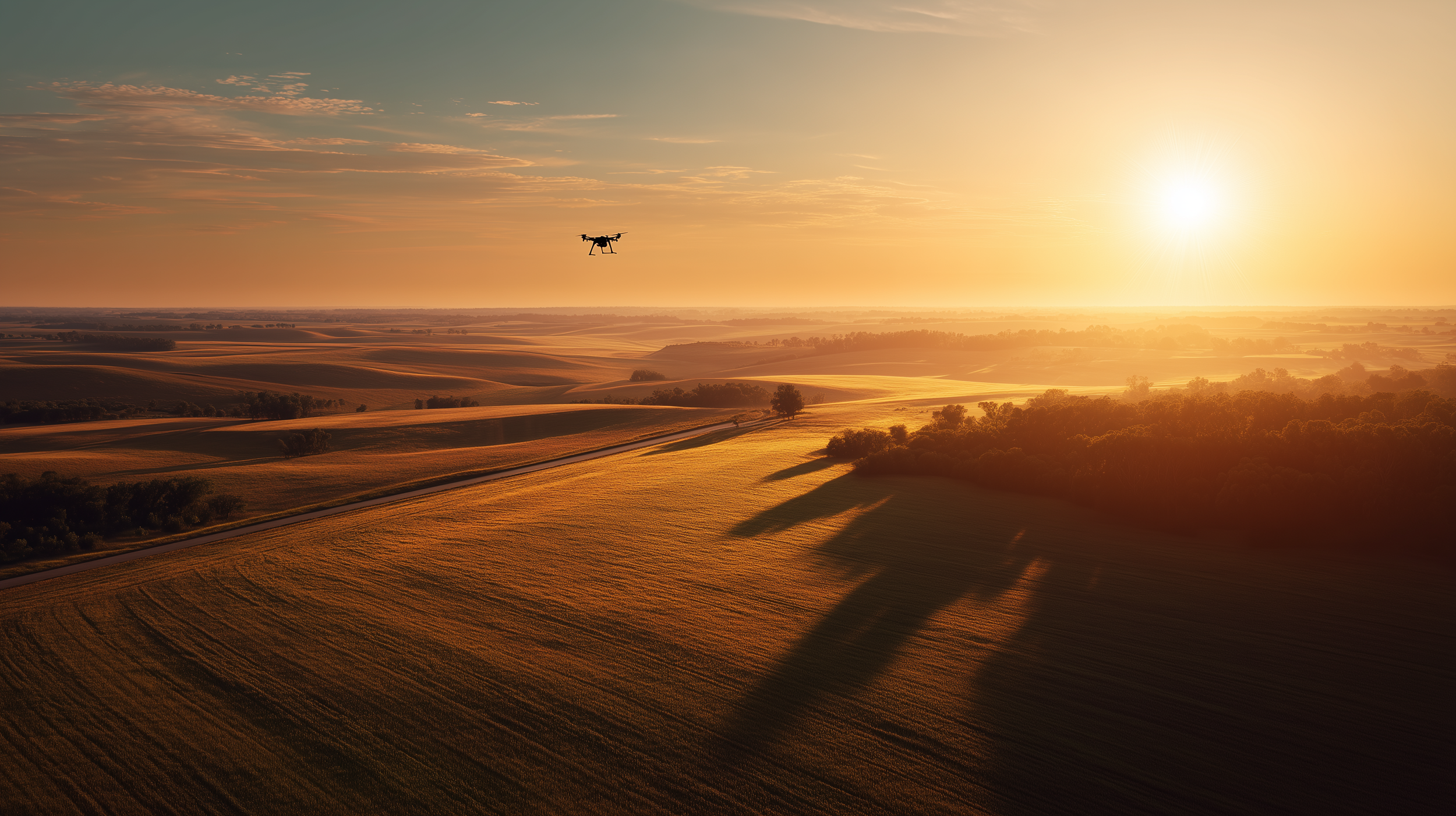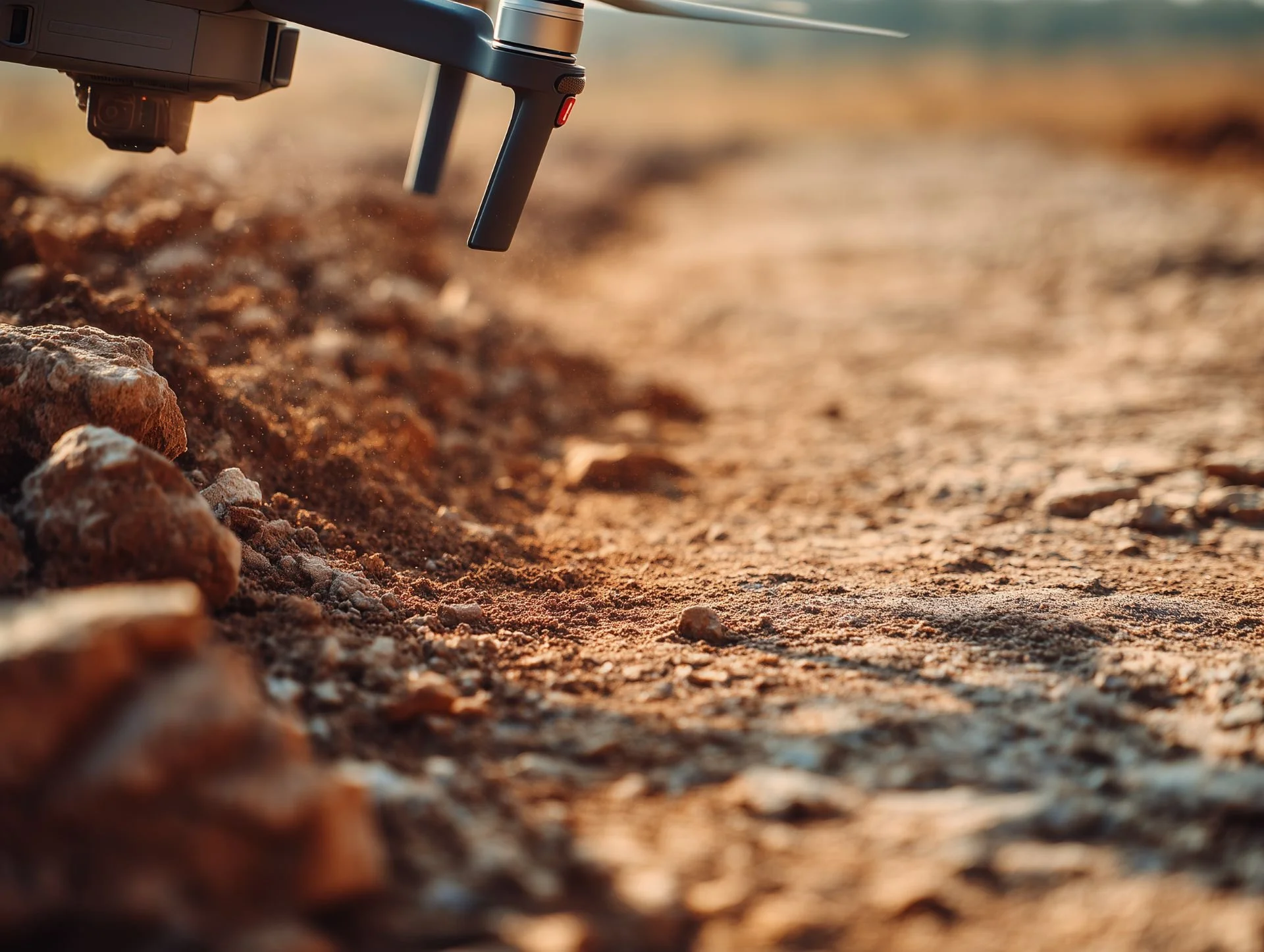
What Sets Agricultural Drones Apart?
One of ADI’s core messages is that policy-makers need to consider the unique nature of agricultural drones when they craft laws and regulations for the drone industry as a whole. The significant value of these drones to America’s farms and ecosystems, the unique operating environments which they are in, and their significant costs all merit accomodation to facilitate their adoption.
Agricultural drones represent the largest innovation in agriculture since the tractor
See ADI’s List of Agricultural Drones Sold in the U.S. Here
Agricultural drones offer numerous benefits over current farming technology
Safer for the Farmer Ag-drones can apply pesticides and other materials far from humans and directly onto plants. This avoids the direct application that can expose agricultural laborers and farmers to harmful chemicals. Further, tractors can roll over on steep terrain which can severely harm, or even kill, farmers.
Safer for the Environment Ag-drones provide far more targeted application of fertilizers and other inputs that can lead to runoff and other issues when applied using traditional methods.
Improve Pasture Livestock are far more agile than any piece of farm equipment. Ag-drones allow farmers to lime and fertilize acreage that was otherwise completely unreachable by traditional equipment.
Operate on Any Terrain Traditionally, after rain, tractors have to wait days for the ground to dry to operate on land that is otherwise navigable. For farms with steep terrain, there are places where planting and harvesting equipment can go, but spray and fertilizer equipment cannot. Additionally, ag-drones can fly at nearly fixed speeds covering 30-40+ acres per hour, regardless of the terrain underneath them. Ag-drones allow farmers to regain precious summer days and apply inputs to their crops safely.
Better Information Multispectral and Hyperspectral ag-drones give farmers insight into the health of every plant. By integrating that information into the mapping for the application drones, inputs can be tailored to exactly what each 1/100th of an acre needs.
What is an ag-drone?
There are two major categories of ag-drones: the heavy-lift spray/spread drones the apply materials and the smaller multispectral or hyperspectral drones that do crop analysis.
Click the button below to learn more about the difference.
Safer for Farmers
Less Exposure to Chemicals Agricultural drones apply pesticides and chemicals at a distance. This ensures that the only time farmers are directly exposed to them is at the mixing stage. This ensures that they are safer and healthier. Ag-drones’ accuracy also allows them to replace backpack spraying, a job which exposes farm laborers to disproportionately high amounts of chemicals.
Less Risk of Injury Every year hundreds of American farmers are killed or injured in tractor roll-over accidents. And that doesn’t count the number of roll-overs or slides down a steep bank in which the farmer is safe but the equipment and crops are severely damaged. Because ag-drones get the farmer off the equipment, and the equipment off the ground, it takes the risk of operating on uneven terrain out of the equation.
Safer for the Environment
Ag-drones can significantly reduce the environmental impact of agricultural inputs on the local ecosystem and watershed.
Direct Application because ag-drones can operate closer than traditional aerial applications, they can apply inputs directly onto crops. This reduces drift compared to traditional aerial applications, and can cover uneven terrain faster than terrestrial equipment.
Targeted Application data from multispectral drones can be integrated into the operational mapping for the larger application drones. This allows fertilizers and other inputs to be applied in calibrated amounts down to 1/100th of an acre. Because the application flights are more efficient and can operate later into the crop’s growth than terrestrial application methods, farmers can shift to higher-interval applications, meaning that, in the event of an unexpected rainstorm, less fertilizer is wasted and less ends up in local watersheds.
Less Preventative Applications Currently, most pesticides and fungicides are applied prophylactically across whole fields. Research is already underway to better understand how agricultural drones can monitor crops, rapidly ID disease outbreaks, and then treat specific regions as needed - greatly reducing the amount of pesticides applied. This saves farmers money and protects the environment.
Agricultural Drones are Critical to America’s Agricultural Future
As the average age of America’s farmers continuing to increase, America’s farms are undergoing a growing challenge of how to replace the knowledge and man-power that is being slowly lost. Agricultural drones are a key part of the solution.
Agricultural drones can perform almost all the work between planting and harvesting and have the capacity to alleviate a lot of the man-power requirements - especially as the capacity to have one pilot manage multiple drones grows.
This can help American farmers, both large and small, thrive far into the future.
Help Support America’s Large Farms
For large farms, small efficiency-gains can yield large rewards. Ag-drones empower farmers to not only get real-time insights into their crops, but allows them to implement that data directly onto their crops in real time.
Agricultural drones can service significant acreage from centrally located sites, reducing the amount of time and effort that is spent managing resources for slow-moving terrestrial equipment.
As labor and employment challenges increase, swarm-capable ag-drones are capable of serving as a significant force-multiplier for larger operations.
Help Support America’s Small Farms
America’s small-hold farmers are increasingly forced to transition to working full-time jobs to sustain their farms, with the average small farm bringing in $10,000.00 in annual income.
As a result, it is increasingly difficult for the farms to afford modern equipment to help them remain competitive with larger farms. Ag-drones are sufficiently portable compared to standard terrestrial equipment that many operators serve exclusively as contract-applicators.
This allows small-hold farmers to contract out the majority of the work between planting and harvest and allow them to leverage the efficiencies of cutting edge technology they otherwise could not access.
Agricultural Drones Occupy a Unique Niche and Unique Airspace
Unlike general photography drones or heavy-lift drones dedicated to logistics, agricultural drones occupy a unique niche of American airspace. Agricultural drones, by definition, operate over unpopulated farmland, with the heavy-lift drones flying within 100 feet of the ground at any time.
Agricultural land has a long history of treating equipment operation differently, trusting that American farmers discretion about equipment operated on their land is far more accurate than generalized policies created by distant regulators.
While ADI understands that the FAA must be involved in the regulation and operation of all aircraft that occupy American airspace, it is our position that America’s agricultural airspace under 100 feet should be afforded a degree of flexibility to reflect the needs of America’s farmers for efficient and effective operations.

